Coriander, called cilantro too, is a useful herb. You can plant it from seeds easily at home. It’s good for your garden, drawing in helpful bugs. Plus, you get tasty leaves and seeds. Coriander gives a lot of seeds. So, start growing it and you can keep planting more.
Growing cilantro from seeds is easy and fun. You can do it indoors or outside. These plants sometimes make lots of seeds quickly. But, you can manage this. With the right care, you can keep getting good leaves. It’s great for anyone, new or good at gardening, to grow coriander seeds. This way, you always have fresh coriander for cooking.
Key Takeaways
- Coriander, or cilantro, is easy to grow from seeds at home
- This herb takes up little space and attracts beneficial insects
- Coriander produces both flavorful leaves and aromatic seeds
- Saving seeds from your coriander plant allows for future planting
- Growing your own cilantro ensures a fresh supply for cooking
Understanding Coriander: A Versatile Herb
Coriander is a well-known herb that you can grow at home. It tastes great in many dishes. And it’s good for you. You can grow it in your garden or a pot. This makes it a great choice for anyone who loves plants.
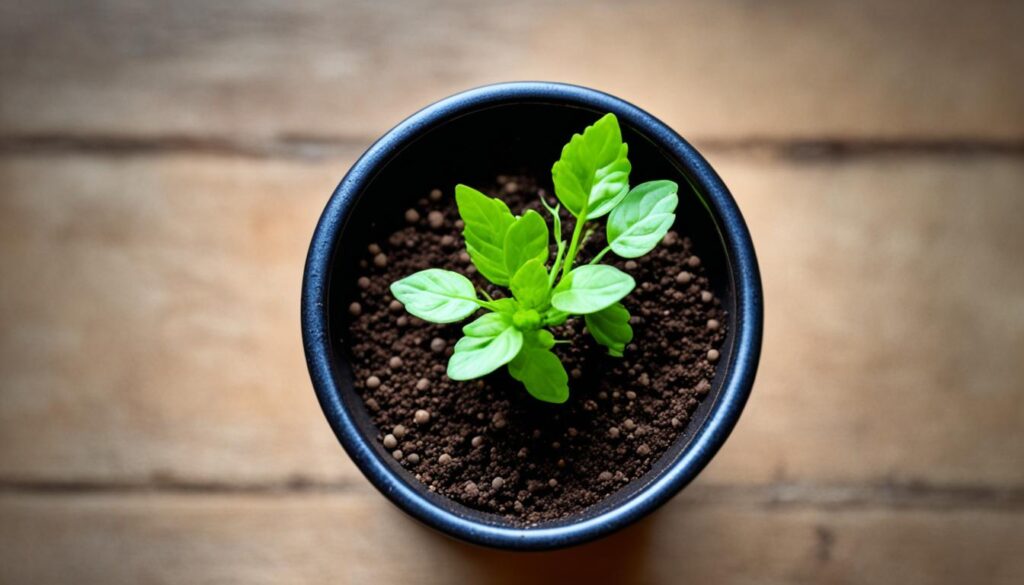
Coriander leaves are also called cilantro. They are found in dishes all over the world. The plant looks pretty, with green leaves and tiny flowers. When you grow coriander, remember to plant the seeds at the right distance apart. This helps them grow well.
Culinary Uses of Coriander
People have used coriander in cooking for a very long time. It makes food look and taste better. Coriander is used in many types of food. This includes salads, salsas, curries, and stews. Here are some ways we use coriander in cooking:
- Garnishing salads, soups, and sandwiches with fresh cilantro leaves
- Using ground coriander seeds in spice blends like garam masala and curry powder
- Adding cilantro leaves to salsas, guacamole, and chutneys for a fresh, zesty flavor
- Incorporating coriander seeds in pickles, marinades, and dressings
Health Benefits of Coriander
Coriander is not just for cooking. It’s good for you, too. It has lots of healthy nutrients. These include things like fiber, iron, and vitamins. Coriander has many health benefits:
| Health Benefit | Description |
|---|---|
| Digestive Aid | It helps with digestion, stopping bloating and gas. |
| Antioxidant Properties | Coriander fights off things that can hurt the body. |
| Anti-inflammatory Effects | It can help with swelling, which is good for your health. |
| Cholesterol Reduction | Eating coriander might lower your chance of heart disease. |
| Blood Sugar Regulation | It could help keep blood sugar at a good level for diabetics. |
Growing coriander is a great idea. It gives you fresh herbs to use. Plus, it invites helpful bugs to your garden. Save the seeds to keep growing coriander. Then, you’ll never run out of this useful herb for cooking.
Choosing the Right Location for Planting Coriander
Selecting the right spot to grow coriander is very important. It ensures the seeds grow well and you get lots of coriander. This guide will show you what to look for in the perfect spot for your plants.
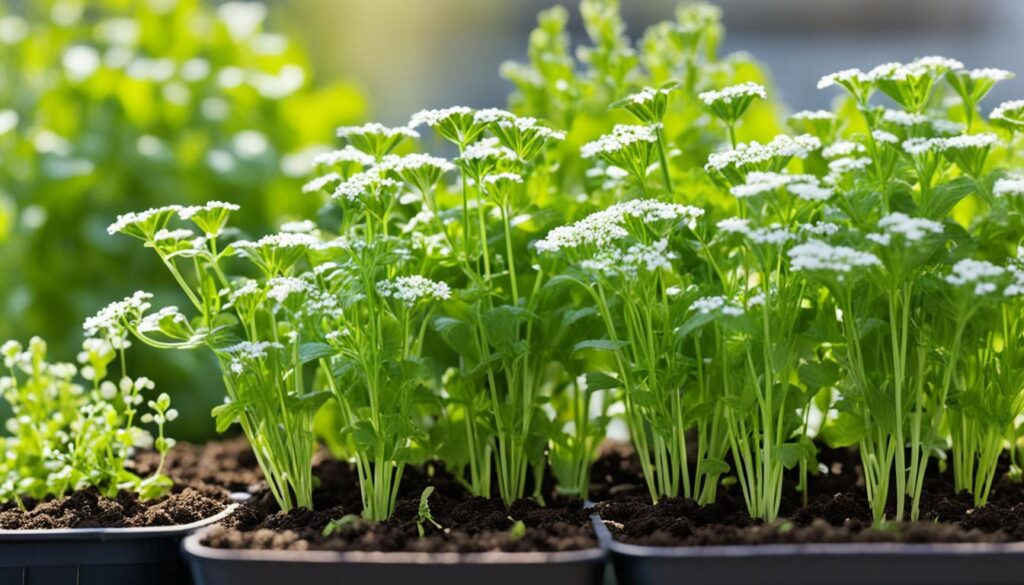
Ideal Soil Conditions for Coriander
Coriander likes soil that drains well and has a pH of 6.2 to 6.8. It needs room for its deep roots.
To help with drainage, add compost or aged manure to the soil. Adding mulch also keeps the soil cool and moist in hot weather.
Sunlight Requirements for Coriander Plants
Coriander enjoys cool weather, like spinach and lettuce. It can grow in full sun or partial shade.
Adding afternoon shade in hot places prevents it from going to seed too soon. Indoors, make sure plants get 4 to 6 hours of sunlight. You can use grow lights too.
| Temperature Range | Soil pH | Sunlight |
|---|---|---|
| 17°C to 27°C (63°F to 81°F) | 6.2 to 6.8 | Full sun to partial shade |
To help your coriander grow well, remember these tips:
- Don’t move the plants once they’ve started growing. It could stress them and make them seed early.
- Water them regularly. The soil should always be moist but not soaked.
- Plant new seeds every couple of weeks for a steady, fresh supply of coriander all season.
- For microgreens, plant the seeds close together in shallow containers. They’re ready to eat when they’re 2-3 inches tall.
With the perfect location and care, you can enjoy plenty of tasty coriander. It’s great for cooking your favorite dishes.
Preparing the Soil for Planting Coriander Seeds
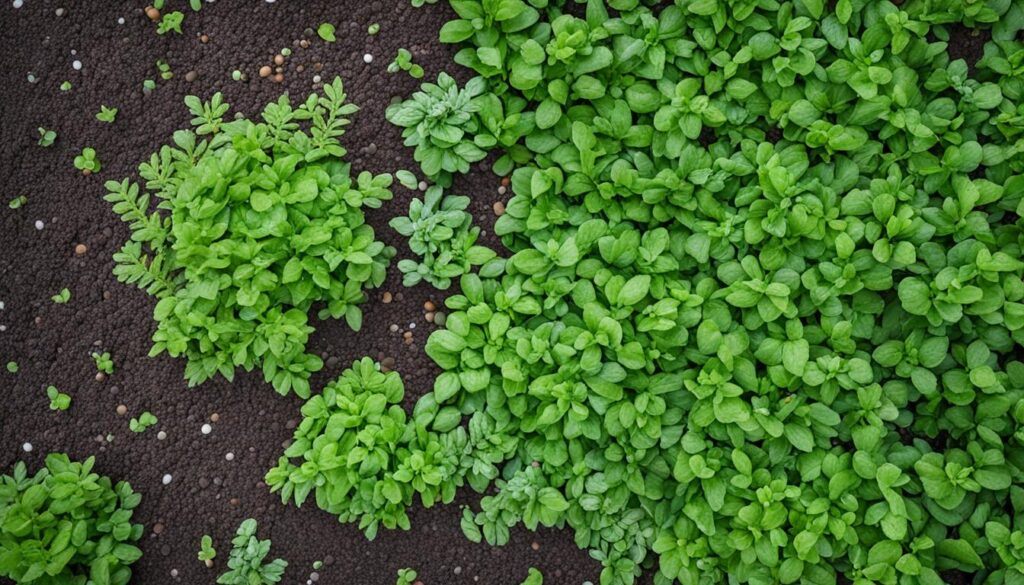
To get lots of coriander from your garden, prepare the soil well first. If you’re planting cilantro at home or in pots, make sure the soil drains well. This helps the seeds grow strong.
Start by pulling out any weeds in the spot for your seeds. Take out all the plants or leftovers, and then mix up the soil. Adding old animal poo or compost helps the soil by giving it food for the plants.
If you’re using pots, pick good soil that lets water flow out easily. Use a pot that’s at least 10 liters big for big coriander plants. Plants in pots may need more food as they grow to stay healthy and green.
Now, it’s planting time. Put each seed about half an inch into the soil. Space them 6 inches apart. Cover them lightly with soil and some soft mulch to keep them wet. Water them gently, making sure the soil is damp but not soaked.
Watch out for bugs and bad plant diseases. Check your plants often for odd spots, white powder, or tiny bugs like aphids. If you see something wrong, fix it fast by removing bad leaves or using a mild soapy water on the plants.
| Soil Preparation Step | Description |
|---|---|
| Weed the area | Remove all unwanted plants and debris from the planting site |
| Loosen the soil | Dig over the soil to improve aeration and drainage |
| Add organic matter | Incorporate aged animal manure or compost to enrich the soil |
| Choose the right container | For container-grown coriander, use a pot at least 10 liters in size |
| Use quality potting mix | Ensure the potting mix has good drainage properties |
By getting the soil ready and watching out for problems, you can grow your own fresh cilantro easily. Let your cilantro plants grow in good soil or pots. Enjoy their tasty smell and flavor in your cooking.
How to Plant Coriander Seeds
Coriander is a cool season herb. You can sow it in the garden or start indoors. Then, move it outside later.
Choose a sunny spot with good drainage. Follow the right spacing and depth. This way, you’ll get lots of fresh leaves and seeds. Your garden will also attract helpful pollinators.
Sowing Coriander Seeds Directly in the Garden
To plant coriander outside, loosen the soil. Space the seeds six inches apart in rows 10 inches apart. Push them lightly into the soil.
Cover with a thin layer of mulch or compost. Water well to press seeds into the soil. This helps them grow strong.
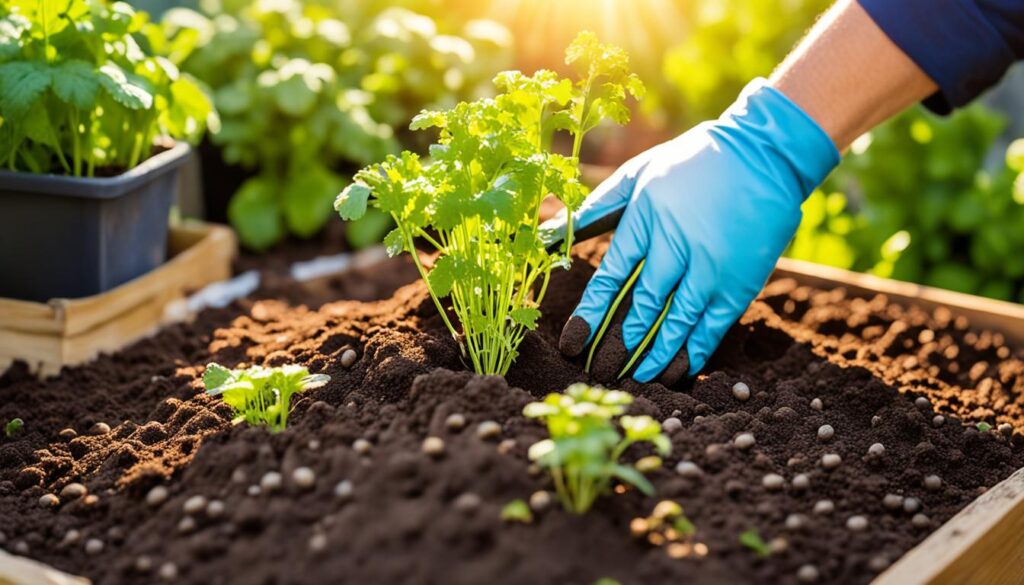
Planting Coriander Seeds Indoors for Transplanting
Starting coriander seeds indoors? Soak them overnight. Then, wait until small white sprouts show up.
Fill a container with soil and plant the seeds. Put it in a sunny place. It needs four to six hours of sunlight every day.
Optimal Spacing and Depth for Planting Coriander Seeds
Correct spacing is key for healthy plants. Plant every seed six inches apart in rows 10 inches apart. This way, they grow well without fighting for space.
Plant the seeds one inch deep in the soil. This keeps them safe and well-moistened for germination. Once they are 2 inches tall, space them out as needed.
These steps make an ideal home for your coriander plants. The plants will flower and invite pollinators. Snip off leaves as they grow for fresh flavor in your dishes.
Caring for Coriander Plants
Once the coriander seeds sprout, you must care for them well. This ensures you get lots of tasty leaves and seeds. Keep your coriander plants happy by feeding, watering, and cutting them right. Follow our simple gardening tips for fresh coriander year-round. You can then season your meals with spices like garam masala and fennel.
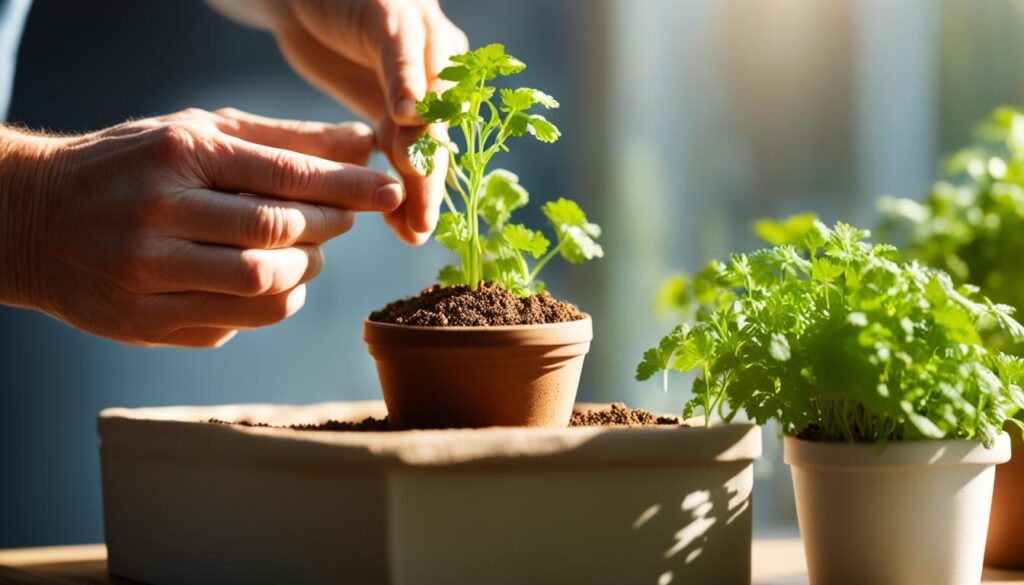
Watering Requirements for Coriander
If you want your coriander to grow big, you must water it right. Too much water is not good for these plants. Always water when the top soil is dry. Make sure to water until it comes out of the bottom. In the hot times, you may need to water more, especially if your plants are in pots.
Fertilizing Coriander Plants
To help your coriander grow strong and leafy, feed it every few weeks. You can use a special plant food or stuff like compost tea. For indoor plants, give them rich soil or add soil food to keep them healthy.
Thinning and Pruning Coriander Seedlings
When your coriander is still young, thin out the plants. This means making sure they aren’t too close together. Cut or move some plants so they have room to grow big and strong.
To keep your coriander producing, cut off the tops from time to time. This makes the plant grow thicker and not ‘bolt’ too soon. Longer pruning means more coriander for you to use in cooking.
| Problem | Cause | Solution |
|---|---|---|
| Bolting | High temperatures or stress | Provide shade, maintain consistent moisture, and harvest regularly |
| Root Rot | Overwatering or poor drainage | Ensure proper drainage, avoid overwatering, and improve soil structure |
| Pests (Aphids, Whitefly) | Infestations on leaves and stems | Use insecticidal soap, neem oil, or introduce beneficial insects |
| Diseases (Wilt, Powdery Mildew) | Fungal infections due to high humidity | Improve air circulation, avoid overhead watering, and use fungicides if necessary |
Stick to our care advice and you can enjoy a good crop of coriander. Tasty leaves and seeds will spice up your kitchen all year.
Harvesting and Using Coriander
Coriander is a very useful herb. It has tasty leaves and seeds that smell good. Knowing how and when to harvest it is important. This way, you get the most from your own plants at home. This guide will show you how to pick coriander leaves and seeds. It will also help you store them for later.
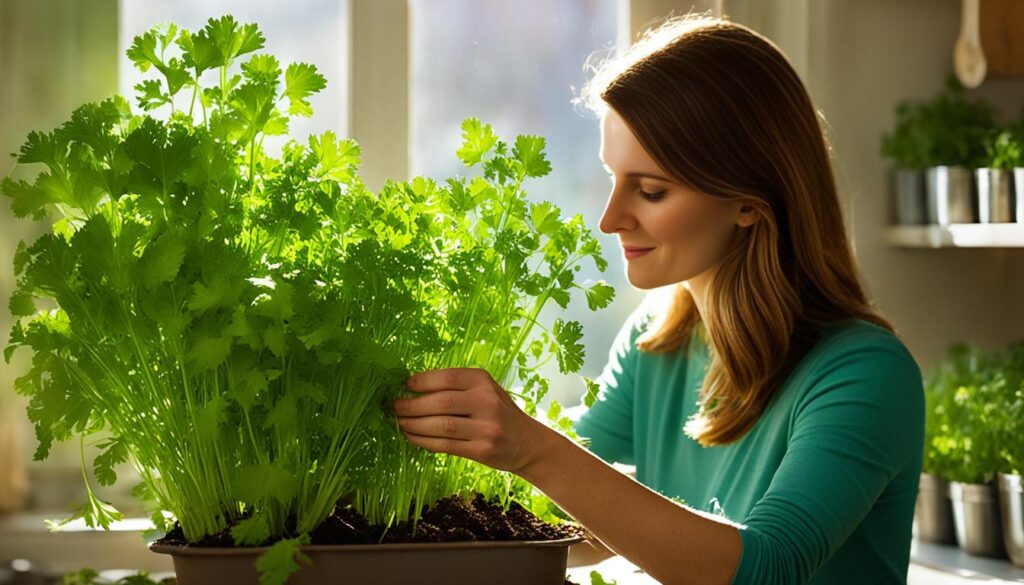
Harvesting Coriander Leaves
Choose leaves to cut when the plant is six inches tall. These leaves are soft and not too bitter. Follow these steps to pick the leaves:
- Pick the outer leaves that are big and leave the small inside leaves.
- Use clean, sharp scissors or shears to cut the stems close to the ground.
- Don’t pull the leaves. This might hurt the plant’s roots and stop it from growing well.
- Keep picking the leaves. This makes the plant get bushier and keeps it from blooming too soon.
Collecting Coriander Seeds
Wait until the plant makes flowers and seeds to collect the coriander seeds. Usually, this is after it blooms. Here’s how to get the seeds:
- Let the plant bloom and make seed heads. These start green and turn brown when ready.
- Cut the brown, dry seed heads off the plant with sharp scissors or shears.
- Put the seed heads in a paper bag. Let them dry in a warm, dry place for a week.
- After they’re dry, gently crush the heads to get the seeds out. Throw away anything that’s not a seed.
Storing Fresh Coriander and Seeds
Storing coriander the right way keeps it tasty. Here’s how to store the fresh leaves and seeds:
- Fresh Coriander Leaves: Wrap the leaves in a damp paper towel. Then, put them in a plastic bag in the fridge. They’ll keep for about a week.
- Coriander Seeds: Put dried seeds in a sealed, cool, dark place. Away from sunlight. Ground seeds are most flavorful. Do it right before you use them.
By using these tips, you can keep enjoying your own coriander all season long. Add it to your meals for fresh, zesty taste.
Conclusion
Planting coriander seeds brings joy. It gives you lots of tasty leaves and seeds. You should learn about what coriander likes.
Set up the right place for it to grow. Take care of it well. This means watering, feeding, and cutting extra leaves or plants. Then, your coriander will do really well and give you plenty to enjoy.
Harvest it at the right time. This way, you can use its leaves and seeds for cooking a lot of good food. You’ll also get lots of good things for your health. Just follow what this guide says, and you’ll grow fantastic coriander at your place.

